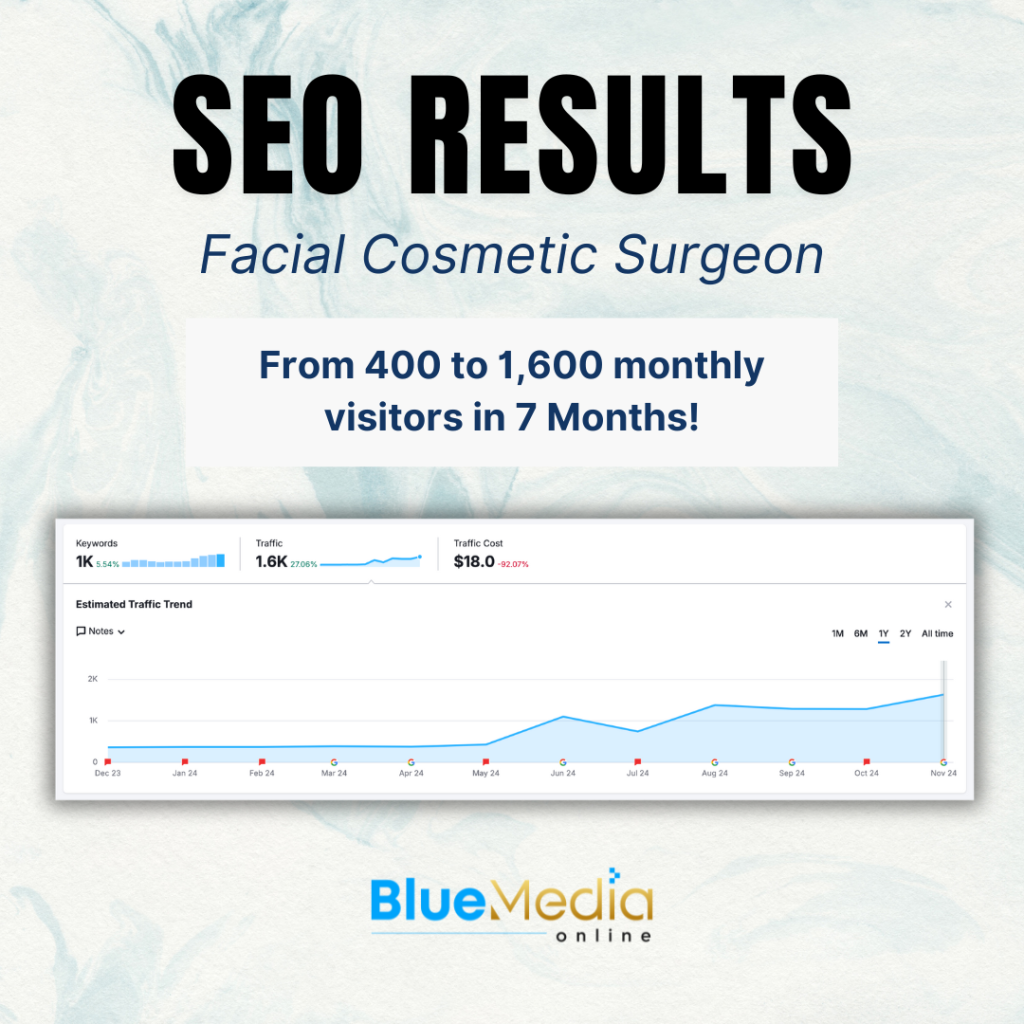A dermatologist at the Center for Aesthetic Medicine told and showed how to properly prepare the face and the entire body for tanning.
If you’re struggling with low lead flow, poor lead quality and lack of appointments, it’s time to reevaluate your plastic surgery social media marketing strategy.
There are 3 stages we walk our clients clients through:
- Educate
- Nurture
- Convert
Here’s the reality: most of the medical practices we audit don’t think about social media marketing this way.
They either create content to see if it works or they don’t.
The good news is if you’re already creating content marketing for plastic surgeons you are one step ahead from your competition and we can leverage such content to get more patients.
So let’s first start by identifying what you’re currently missing.
For example, if your lead flow is low, meaning you’re barely getting any leads, it likely means you have a visibility and a conversion problem.
On the other hand, if you’re already capturing plenty of leads but your lead quality is low, you’re likely not focusing enough on content that educates, builds trust and top of mind awareness.
So you’re missing out on turning those people into qualified appointments.
Makes sense?
Without proper lead quality and consultations, you’re just randomly spending money trying to figure out what sticks, with no results to show for.
Allow me to give you a real example of a Plastic Surgeon we’ve been getting more patients and increasing his revenue for.
How our Plastic Surgery Marketing Strategies generates results
I had a conversation with him recently because he wanted to also focus on getting more Rhinoplasty patients.
He was struggling with both: low lead count and poor lead quality.
He wanted to get an additional 2-4 Rhinoplasty patients per month, something which for us is very doable.
When we sat down, I walked him through our plastic surgery social media marketing strategy, and it suddenly clicked for him.
He understood what he was missing.
Before this, he was sold that all he needed was just more leads, regardless of quality and buying intent.
He was convinced it was a numbers game – which it is, but not at the expense of lead quality. Effective plastic surgeons social media strategies are essential for enhancing brand awareness and engaging with prospective patients.
As a result, he was attracting a lot of bottom-of-the-barrel price shoppers.
Unfortunately, when you don’t have a clear, proven process, this is what most businesses rely on.
However, our approach focuses on building trust, credibility and making sure your audience is in the right frame of mind, before converting them into leads and consultations.
This is through the 3 stages mentioned at the beginning: educate, nurture and convert.
Educate means you address your audiences concerns, you share your expertise and show them in real time what they could experience by choosing you as their surgeon.
Nurture, is when they already know you and there’s a layer of trust, but are not ready to book just yet.
So you place ads and content in front of them that answers their questions, provide more in depth information, setting realistic expectations, sharing testimonials and much more.
Finally, when they are ready to convert, you go for the close.
That’s when its most optimal to capture your audience as a hot lead.
You have to do little to no selling because you’ve done all the heavy lifting with the educational content from before.
So here you’re just reaping the rewards with little to no buying resistance.
Everything else you do before you convert, has to be intentional.
From the topics you address, to the video format, to the nurturing, all of it.
Using this framework is how we’ve been able to help our clients grow their medical practice and escape the hamster wheel of always needing more and more leads.
Now, there are a few additional and crucial steps you must understand to apply this strategy.
Let’s dig into it.
Understanding Your Audience
Before applying any of this, you need to first understand who your audience is.
Understanding your target audience is crucial for creating effective plastic surgery social media marketing content and ads.
Knowing your audience’s demographics, interests, and behaviors can help you tailor your content, choose the right social media platforms, and engage with your audience more effectively.
By identifying who your potential patients are, you can create content that resonates with them, addressing their specific concerns and interests.
This targeted approach not only enhances your social media presence but also builds trust and credibility with your audience, ultimately leading to higher engagement and get more qualified leads.
Now let’s talk about what target age group you should target and where.
Identify Your Target Age Group
Different age groups have different preferences when it comes to social media platforms. For example, younger audiences tend to prefer TikTok and Instagram, while older audiences tend to prefer Facebook and YouTube. According to the American Society of Plastic Surgeons (ASPS), the most common age groups for plastic surgery procedures are:
- 13-19 years old: Rhinoplasty, breast augmentation, and liposuction.
- 20-39 years old: Breast augmentation, liposuction, and facelift.
- 40-54 years old: Facelift, eyelid surgery, and breast lift.
- 55-69 years old: Facelift, eyelid surgery, and neck lift.
- 70 years old and above: Facelift, eyelid surgery, and skin rejuvenation.
If you understand your target age group, it can help you create content that resonates with them and choose the right social media platforms to reach them.
For instance, if your practice focuses on rhinoplasty for teenagers, creating engaging TikTok videos or Instagram stories might be more effective.
On the other hand, if you specialize in facelifts for older adults, educational YouTube videos or informative Facebook posts could be more suitable.
Know Your Competitors
Knowing your competitors can help you differentiate your practice and create unique content that sets you apart or even find that one piece of content that works best.
Research your competitors’ social media presence, content, and engagement to identify gaps and opportunities.
Analyze their strengths and weaknesses to create a competitive advantage for your practice.
For example, if a competitor is excelling in before-and-after photo posts but lacks educational content, you can focus on creating informative videos or blog posts that address common patient questions and concerns.
By understanding what your competitors are doing, you can find ways to stand out and attract more patients to your practice.
Choosing the Right Social Media Platforms
With so many social media platforms available, choosing the right ones for your plastic surgery practice can be overwhelming. Here are some tips to help you select the best platforms for your practice:
Selecting the Best Platforms for Your Practice
- Facebook: With over 2.7 billion monthly active users, Facebook is a great platform for reaching a wide audience. It’s ideal for sharing educational content, promotional offers, and engaging with patients. You can use Facebook to post updates about your practice, share patient testimonials, and run targeted ads to reach potential patients.
- Instagram: Instagram is a visually-driven platform with over 1 billion active users. It’s perfect for sharing before-and-after photos, videos, and stories that showcase your work. Use Instagram to highlight your expertise, share behind-the-scenes content, and engage with your audience through comments and direct messages.
- TikTok: TikTok is a rapidly growing platform with over a 1 billion active users. It’s ideal for creating short, engaging videos that showcase your personality and expertise. Use TikTok to create fun and informative videos about plastic surgery procedures, answer common questions, and share patient success stories. If you’re not showing up for “Tiktok plastic surgeons” you’re missing out!
- YouTube: YouTube has over 2 billion active users. It’s perfect for creating educational content in long format. Videos over 5 minutes excellent here, such as videos about plastic surgery procedures, and sharing patient testimonials. Use YouTube to provide in-depth information about your services, share patient experiences, and establish yourself as an authority in the plastic surgery industry.
- Twitter: While not in the top 5 social plastic platforms, the best way to see Twitter (now X) is as a micro-blogging platform. It’s ideal for sharing short updates, news, and engaging with people in real-time.
When selecting social media platforms, consider your target audience, content strategy, and resources.
Focus on the platforms that align with your goals and target audience, and don’t be afraid to experiment and adjust your strategy as needed.
By choosing the right platforms and creating engaging content, you can enhance your social media presence and attract more patients to your plastic surgery practice.
If you’d like to work with us, check us out at https://www.bluemediaonline.com
Let’s Talk About Your Growth
Book a Consultation
It’s easy and free!










